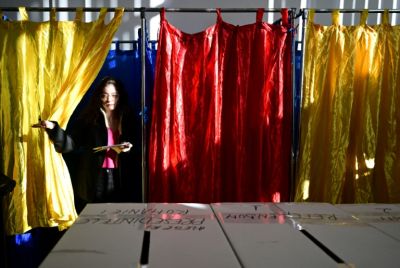Supreme Court Rules That U.S. Steel Corp. (X) Workers Can’t Be Paid For Getting Dressed

On Monday, the Supreme Court ruled against a claim from a group of steelworkers asking to be paid for the time they spend putting equipment on and taking it off.
The court ruled in favor of United States Steel Corporation (NYSE:X) and against its group of employees at Indiana subsidiary Gary Works who claimed they can spend up to two hours getting ready for work.
“The time petitioners spend donning and doffing their protective gear is not compensable,” wrote Justice Antonin Scalia in his opinion on Monday.
“We see no basis for the proposition that the unmodified term ‘clothes’ somehow omits protective clothing,” he wrote.
“We are pleased that the Supreme Court has unanimously ruled in our favor that the brief amount of time it takes to put on and remove protective clothing is not part of the paid workday under the Fair Labor Standards Act,” said U.S. Steel in a public statement.
“For many decades, U.S. Steel has appropriately and constructively addressed these matters in our collective bargaining process and this decision reaffirms the validity of that approach.”
The workers, naturally, were not pleased. If the court had ruled in favor, they would have received backpay for time spent getting ready for their shifts.
“It doesn’t surprise me,” said retired worker Herbert Harris to the Times of Northwest Indiana.
“Big money is big money. The system is the system.”
In this cause, the system relied heavily on arguments made by Eric Schnapper, a lawyer representing the workers.
On Nov. 4, he debated the case with the Supreme Court Justices.
According to court transcripts, he began citing the difference between ordinary clothes and other things people wear that don’t qualify.
“In ordinary parlance, not everything an individual wears would be referred to as clothes,” he said.
“There are examples of that in this courtroom: lasses, necklaces, earrings, wristwatches. There may be a toupee, for all we know.”
“I resent that,” Justice Scalia replied.
Later, Schnapper cited a 2002 opinion letter from the government detailing which things didn’t qualify as clothing.
“They drew the line at tools and scabbards,” he said.
“Tools and what?” Scalia asked.
“Scabbards,” he answered.
“Scabbards,” said Scalia.
“Knife scabbards,” Schnapper answered.
But Justice Ruth Bader Ginsburg got everyone back on track.
“But what we’re dealing with here, from the picture, that looks like clothes to me,” she said.
Schnapper went on to explain that equipment that workers wear, such as work belts, hoods and fire-resistant coats, were designed for the job and are meant specifically for protection from workplace hazards.
But the judges had a problem since a photo of a worker dressed for a shift showed him in what looked like ordinary clothes.
“Let’s apply a little bit of common sense to life,” said Justice Sonia Sotomayor.
“There is an old saying that if it looks like a duck and it swims like a duck and it quacks like a duck, it’s a duck,” she said.
Schnapper went on to argue that things made specifically for work shouldn’t count as ordinary clothing, and cited another example: “You understand that the person is wearing a hood over his head not because it’s cold, but because, although it’s probably 100 degrees where he is working, he is in danger of being burned if he doesn’t wear it.”
“If, after that, you call it clothes, I disagree with you.”
The judges also brought up examples using cold weather as a possible situation.
“What if you are working out in the cold and you wear a parka so that you don’t freeze while you’re working? Are those workplace hazards,” asked Justice Samuel Alito.
“So you have to pay a worker who’s in the South Pole overtime for putting on his parka?” Sotomayor added.
Despite the complicated arguments, today’s ruling shows he was not able to convince them, and the steelworkers will continue not being paid for time spent getting dressed.
© Copyright IBTimes 2024. All rights reserved.






















